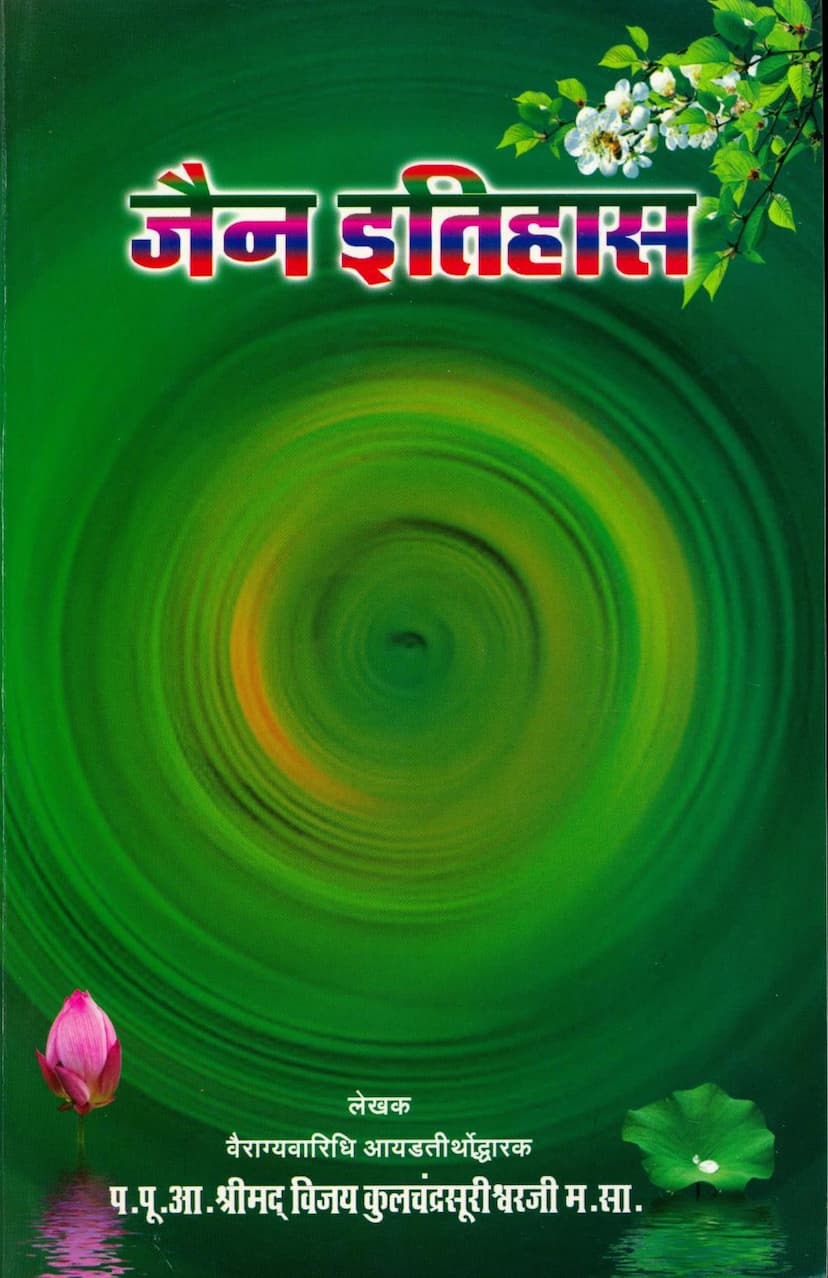Jain Itihas
Added to library: September 2, 2025

Summary
This Jain text, titled "Jain Itihas" (History of Jainism), is authored by Acharya Shrimad Vijay Kulchandrasurishwarji Maharaj. Published by Divyadarshan Trust, it aims to provide a comprehensive overview of Jain history, starting with the teachings of Lord Mahavir Swami.
The book is dedicated to the author's guru, Acharya Shrimad Vijay Premsurishwarji Maharaj, recognizing him as a sculptor of sadhus, a contributor of vast Jain literature, and an adherent of pure renunciation. The publication is further supported by the Talasera family in memory of their parents and in celebration of Acharya Shrimad Vijay Kulchandrasurishwarji Maharaj's 50 years of monastic life.
The "Jain Itihas" aims to offer readers a glimpse into their glorious past and is considered a unique and valuable resource, suitable for both general readers and those involved in religious education. The author, Acharya Kulchandrasurishwarji Maharaj, is acknowledged as a prolific literary figure who has previously authored several important works.
The editorial emphasizes that history serves as a mirror to the past, providing knowledge and inspiration for the future. It highlights the significance of studying religious history, drawing inspiration from the lives of great spiritual leaders who instill courage, patience, and momentum. The book is specifically noted for its creation for the understanding of children and youth, serving as a concise yet valuable guide.
The text begins by establishing that history is a collection of past events and stresses the importance of learning from the lives of great personalities to cultivate a noble life and inspire self and societal welfare. It then delves into the Jain perspective on the origin of the universe, refuting the concept of a divine creator and asserting that the world is eternal and self-sustaining.
The book then chronicles the history of Jainism through the lineage of Tirthankaras, focusing on Lord Mahavir Swami as the most recent and relevant figure for the current era. It details:
- Lord Mahavir Swami's Life: Birth, family (parents Siddharth and Trishala, wife Yashoda, daughter Priyadarshana), renunciation at age 30, 30 years of severe penance, facing numerous hardships and insults (upasargas) with equanimity, achieving Keval Gyan (omniscience) at age 42, establishing the Chaturvidh Sangh (fourfold community of monks, nuns, laymen, and laywomen), and delivering sermons in Prakrit-Ardhamagadhi. It also mentions the philosophical concept of "uppannei va, vigamei va, dhruvei va" (arising, perishing, and remaining constant) to explain the nature of existence. The text highlights the suffering of the soul due to karmic bondage and prescribes the path of renunciation, self-control, and universal love for liberation.
- Successors and Jain Tradition: It traces the lineage of spiritual leaders (pattadharas) and influential acharyas who perpetuated Jain teachings, including the compilation of scriptures (Agam Vachanas) and the establishment of monastic traditions and lineages (gachhas).
- Historical Figures and Events: The book details the lives of important kings, ministers, and societal figures who were influenced by Jainism, such as Maharaja Shrenik, Maharaja Konik, Harshavardhan, Emperor Chandragupta Maurya, Emperor Ashok, King Kharavel of Kalinga, King Bhoj of Malwa, and various influential acharyas like Kalakacharya, Bhadrabahuswami, Sthulibhadra, Hemchandracharya, and others. It also touches upon major historical events and the impact of Jainism on society and governance.
- Specific Tirthas and Institutions: The text mentions the establishment and significance of various Jain pilgrimage sites (tirthas) like Shatrunjaya, Girnar, Pavapuri, and others, along with the construction and restoration of temples and knowledge repositories (gyan-bhandars).
- Sects and Doctrinal Debates: It describes the emergence of different sects and philosophical interpretations within Jainism, including discussions on issues like the nature of karma, the path to liberation, and the correct observance of monastic and lay practices. It highlights instances of philosophical debates and their resolutions.
- Impact of Jainism: The book emphasizes the pervasive influence of Jainism on kings, ministers, merchants, and common people, leading to their conversion, patronage of Jainism, and contribution to societal welfare through charitable activities and the promotion of ethical living.
The concluding sections highlight the contributions of various acharyas and scholars in preserving and propagating Jain scriptures and philosophy through their writings and teachings. The text also acknowledges the historical periods of decline and resurgence of Jainism, along with the challenges faced from external influences and internal schisms.
Overall, "Jain Itihas" appears to be a detailed historical account of Jainism, focusing on the lives of Tirthankaras, acharyas, and influential patrons, as well as the development and propagation of Jain philosophy and practices throughout different eras. It serves as a valuable resource for understanding the rich history and heritage of the Jain tradition.